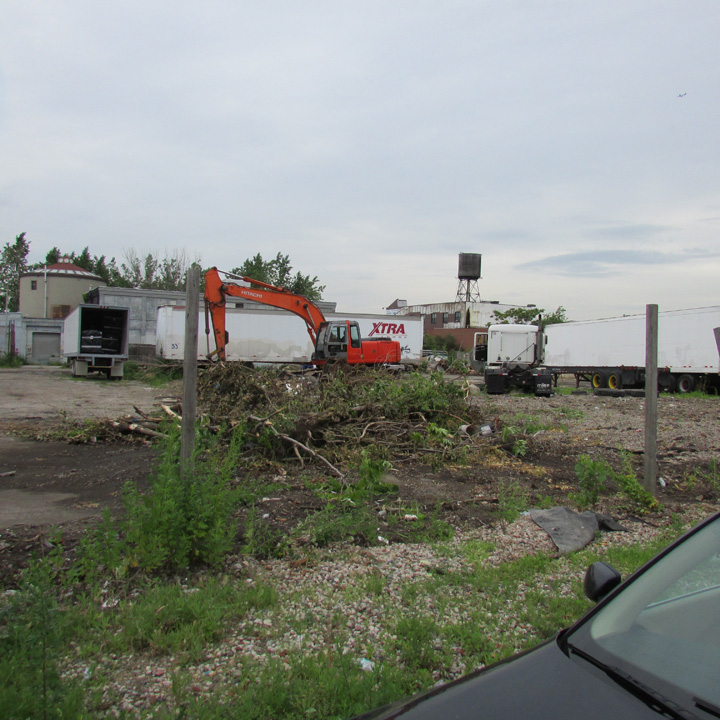The EPA issued a press release today announcing a potential deal with the Lightstone Group regarding remediation of toxic poisons.

Lightstone has agreed to spend approximately $20 million to cleanup the land that they will be building on.
EPA has the authority to name Potentially Responsible Parties (PRP’s) who then must pay for a Superfund Cleanup. In the case of the Gowanus Canal, National Westminster (the former Brooklyn Union Gas Co.) and the City of NY, along with a host of smaller companies, are mandated to supervise and pay for the $500 million plan that the EPA has devised in order to cleanup the canal and to prevent future contamination.
The Lightstone Group cannot be considered a PRP, since they are only now just starting their project, and their land is not under the canal. However, if it is found in the future that chemicals are leaching into the Canal, or that they are discharging raw sewage into the Canal, they can then be named a PRP and liable for cleanup costs. This settlement achieves the EPA’s goal of removing toxins from around the canal, as well as capping Lightone’s liabilities.
“These settlements illustrate that the Superfund program can work in parallel with redevelopment,” said Judith A. Enck, EPA Regional Administrator. “The removal of contaminated soil and the other actions proposed under this agreement will reduce pollution along the Gowanus Canal and serve as a model for addressing the impacts of future potential development along the Canal.”
The press release spells out some of the terms of the agreement:
“Under the terms of the settlements, and with EPA oversight, the Lightstone subsidiaries will, among other actions:
- Conduct additional sampling to help determine additional source areas of contamination
- Remove an estimated 17,500 cubic yards of contaminated soil to facilities licensed to receive the waste
- Construct a bulkhead to prevent residual contamination from spreading and to permit dredging
- Ensure that the project will not be a future contamination source to the Canal through EPA approval of sewage and stormwater plans”
This agreement is subject to public scrutiny and comment.
Comments should be sent by email or mail to Brian Carr, Assistant Regional Counsel, U.S. EPA, 290 Broadway – 17th Floor, New York, New York 10007-1866, or carr.brian@epa.gov.
The Orders can be found on the EPA’s web site at
http://epa.gov/region2/superfund/npl/gowanus/additionaldocs.html
UPDATE:
From Brian Carr, EPA attorney:
Background Information on “Bona Fide Prospective Purchasers” (BFPPs)
EPA has been asked about the definition of a BFPP and how it differs from a Potentially Responsible Party (PRP). Under the federal Superfund law, an owner or operator of a contaminated property may be liable as a PRP under a range of circumstances. To promote cleanup and re-use by buyers who were not the polluters, Congress changed the Superfund law in January 2002 so that new property purchasers can automatically qualify for the “Bona Fide Prospective Purchaser” (BFPP) liability protection under Superfund. Where appropriate, EPA may also enter into an administrative settlement agreement which will, among other things, provide protection from lawsuits brought by other parties by confirming that the buyer is a BFPP, typically in exchange for cleanup work.
The proposed settlements represent EPA’s determination, with Department of Justice approval, that The Lightstone Group entities qualify as BFPPs. The voluntary cleanup actions that Lightstone will perform were developed after EPA’s detailed technical review, and with Lightstone’s cooperation, such as taking additional samples requested by EPA. EPA believes that this cleanup work will benefit the overall Canal cleanup. The settlements are not the result of any actual or potential lawsuit by EPA against Lightstone. EPA is accepting public comment for 30 days on the settlements.
More information on the duties and obligations of a BFPP can be found at the EPA’s brownfields website:
http://www2.epa.gov/enfo…/bona-fide-prospective-purchasers









One Comment
Lightstone was already doing some kind of land cleanup under the NY State Brownfield Cleanup Program, which the tax payer were footing the bill for. Are the taxpayers going to be picking up any part of these additional costs?